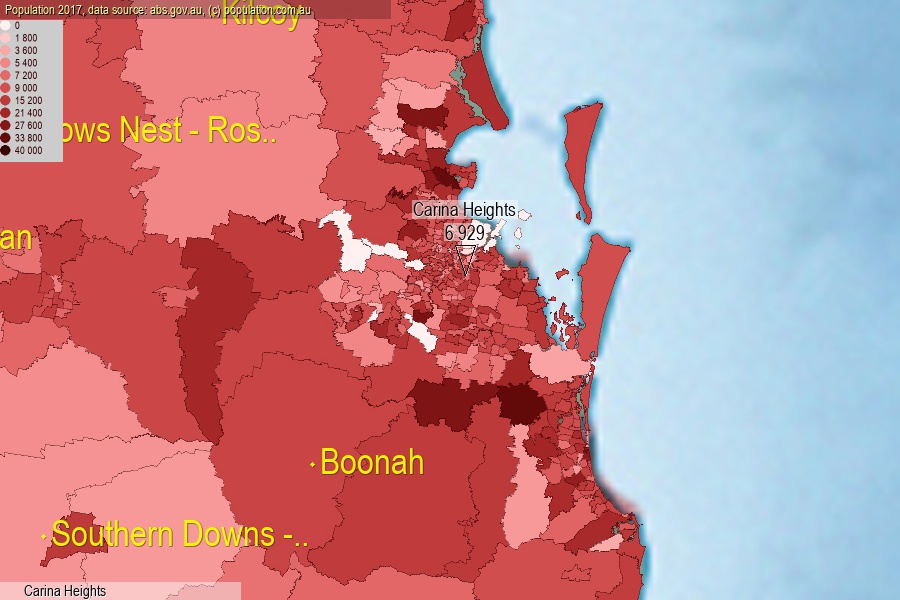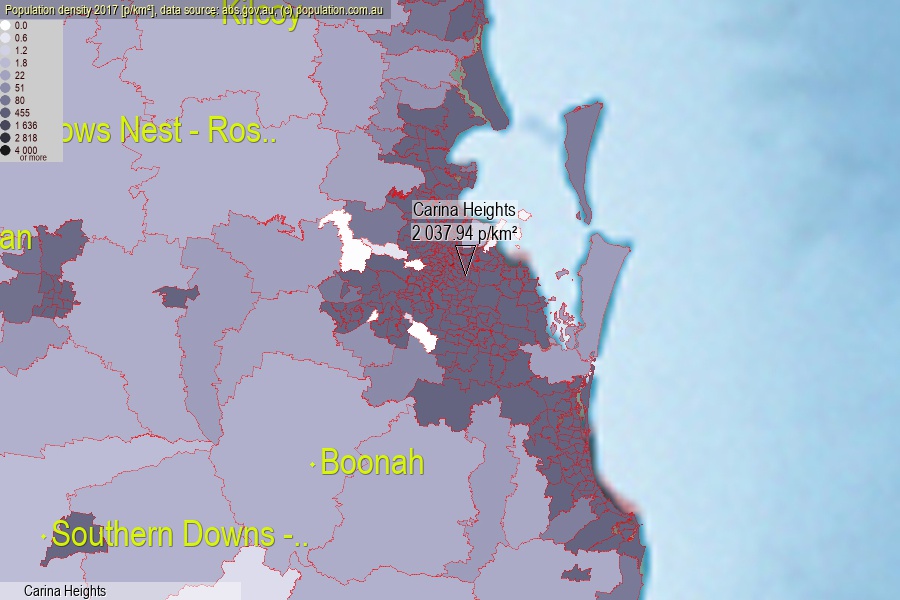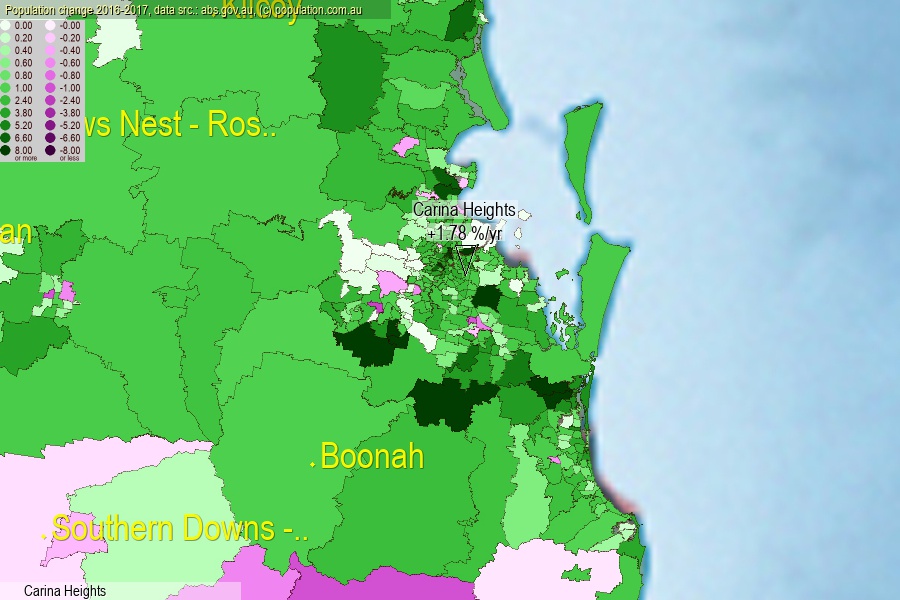 population.com.au
population.com.auLast official estimated population of Carina Heights (as Statistical Area Level 2) was 6 929 people (on 2017-06-30)[2]. This was 0.03% of total Australian population and 0.139% of QLD population. Area of Carina Heights is 3.40 km², in this year population density was 2 037.94 p/km² . If population growth rate would be same as in period 2016-2017 (+1.78%/yr), Carina Heights population in 2025 would be 7 978. [0]



Click to enlarge. Carina Heights is located in the center of the images.
Population [people], population density [p./km²] and population change [%/year] [2]
View borders » (new window) [4]
[1991-1992] -1.03 %/Yr.
[1992-1993] +4.99 %/Yr.
[1993-1994] +2.05 %/Yr.
[1994-1995] +1.69 %/Yr.
[1995-1996] +2.23 %/Yr.
[1996-1997] +1.00 %/Yr.
[1997-1998] +0.27 %/Yr.
[1998-1999] +0.53 %/Yr.
[1999-2000] +0.32 %/Yr.
[2000-2001] +0.56 %/Yr.
[2001-2002] +1.12 %/Yr.
[2002-2003] -0.28 %/Yr.
[2003-2004] +0.69 %/Yr.
[2004-2005] +0.96 %/Yr.
[2005-2006] +0.44 %/Yr.
[2006-2007] +0.81 %/Yr.
[2007-2008] +2.92 %/Yr.
[2008-2009] +1.88 %/Yr.
[2009-2010] +0.79 %/Yr.
[2010-2011] +1.18 %/Yr.
[2011-2012] +1.41 %/Yr.
[2012-2013] +1.38 %/Yr.
[2013-2014] +0.87 %/Yr.
[2014-2015] +1.74 %/Yr.
[2015-2016] +1.38 %/Yr.
[2016-2017] +1.78 %/Yr.
[0] Calculated with linear interpolation from officially estimated population
[1] Read more about SA2 and Australian Statistical Geography Standard (ASGS) on abs.gov.au
[2] Population data from Australian Bureau of Statistics (Population and density: 2017; change: 2016-2017)
[3] Digital Boundaries: Australian Statistical Geography Standard (ASGS) 2016.
[4] Border coordinates are simplifyed using Ramer-Douglas-Peucker algorithm.